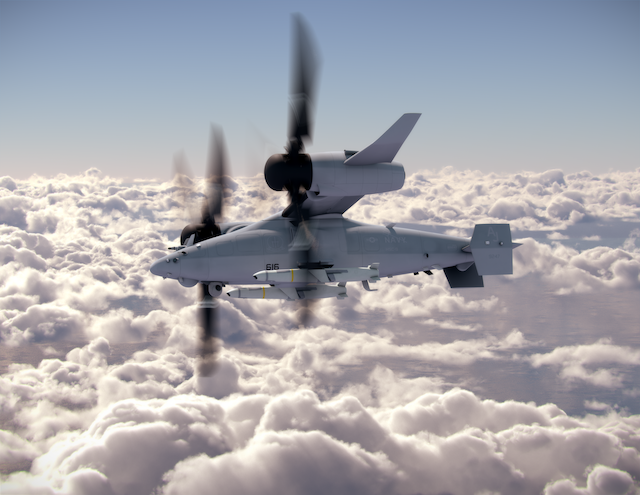
Credit: Bell
Bell has scaled down and redesigned the unmanned V-247 tiltrotor to propose as a member of family of systems that would become the U.S. Navy’s Future Vertical Lift-Maritime Strike (FVL-MS) program. The new, 28,000-lb. version of the V-247 features a folding blade and rotor system to allow the...
Subscription Required
This content requires a subscription to one of the Aviation Week Intelligence Network (AWIN) bundles.
Schedule a demo today to find out how you can access this content and similar content related to your area of the global aviation industry.
Already an AWIN subscriber? Login
Did you know? Aviation Week has won top honors multiple times in the Jesse H. Neal National Business Journalism Awards, the business-to-business media equivalent of the Pulitzer Prizes.





